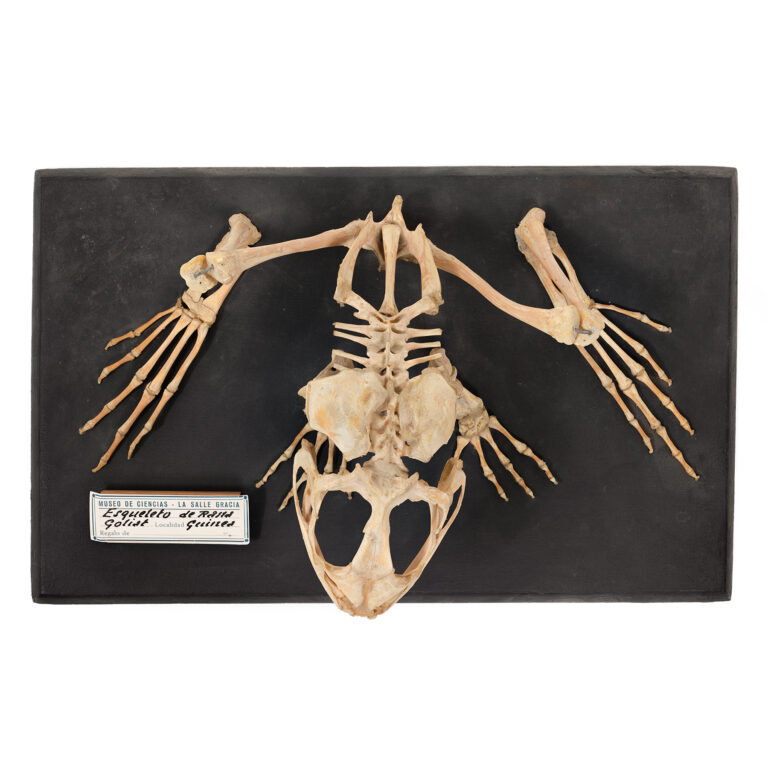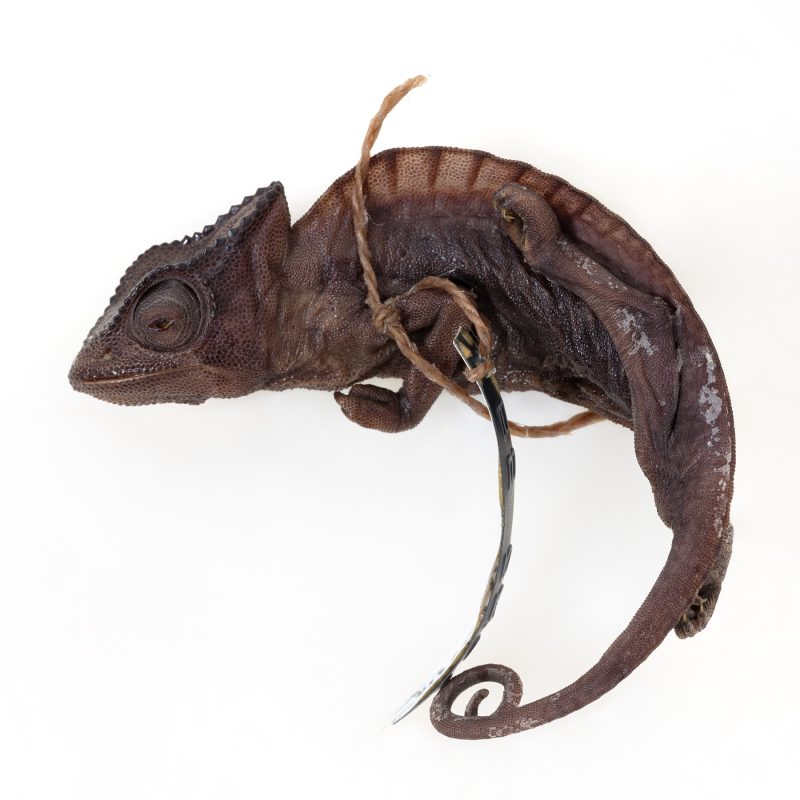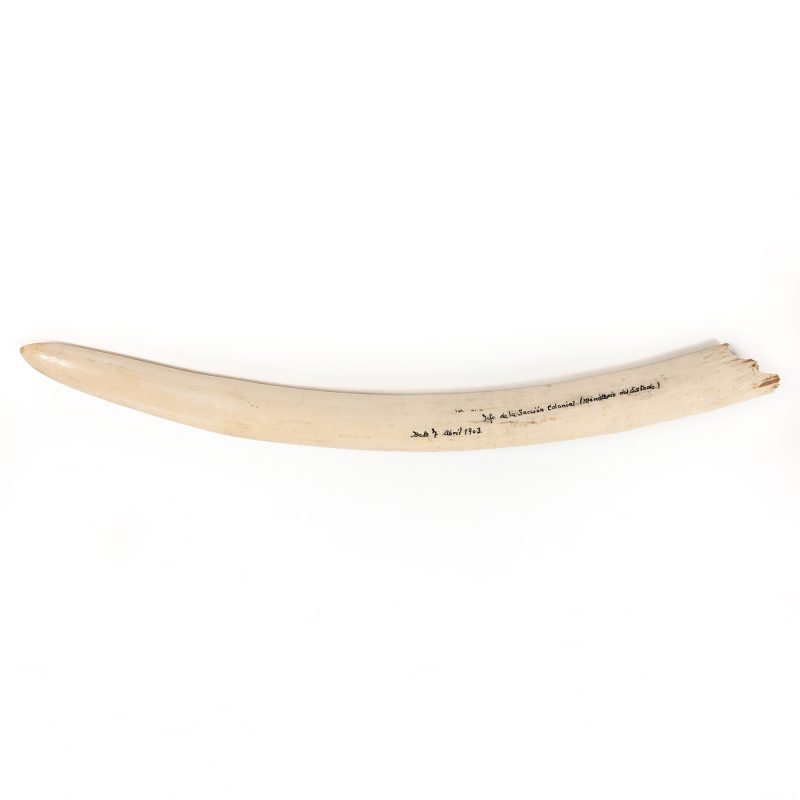Summary of results
There is no specific description of the particular item, only that it comes from the donation made by La Salle-Gracia de Barcelona in 2020. It has not been possible to cross-reference the data related to the specimen and the archive dossiers of the Natural Sciences Museum of Barcelona.
Chronological reconstruction of provenance
In the database of chordates from Equatorial Guinea provided by the curators, there are two specimens of this specimen from the La Salle donation. In the online database, eleven more records of this type of specimen appear in different formats, one of which has an unknown source and dates (naturalized skin); another is from the collector Salvador Filella Cornadó, and the remaining nine come from the Barcelona Zoo (collected in 1969 and acquired in 1970). Salvador Filella Cornadó (1943) is a taxidermist and was curator of the Barcelona Zoo.
The La Salle-Gracia collection represents 7.85% of the entire collection of chordates from Equatorial Guinea, making it the second most important, taking into account that the Martínez de la Escalera collection represents 83%.
From the report made on the La Salle-Gracia donation:
‘On 31 August 2020, Mr XXXXX, from the La Salle-Gracia School, representing the headmaster of the school, Mr XXXXX, legal representative of the school, offered part of the didactic collection of vertebrates (1958–1980) of the aforementioned educational institution, collected as a result of the activity of the Brothers of the congregation and private donations from families linked to the school. Once the collection had been reviewed and the material identified, a filtering of the most interesting specimens was made, which, according to the inventory of the donation, consists of 192 units (217 specimens) from all over the world: 40 mammals (35 skins, 4 skeletons, 1 animal in liquid), 119 birds (116 skins, 3 skeletons), 16 reptiles (15 skins, 1 skeleton), 4 amphibians (3 skins, 1 skeleton), and 13 fish (13 skins)’.
The details of the director and his representative are confidential, therefore they appear as ‘XXXX’.
This specimen of goliath frog has no date of collection, but, assuming it was a direct collection by the De La Salle Brothers, we can only guess at a date between 1958 and 1980.
Estimation of provenance
Mainland Equatorial Guinea, between 1958 and 1980.
Possible alternative classifications
«Frog» in ndowe (kombe) is called egwogwogwo.
Complementary sources
Archives:
CRAI UB – Belles Arts. Fons Sabater Pi: B1 i B2 correspondència rebuda i enviada per Jordi Sabater Pi.
Bibliography:
Filella i Cornadó, S. (1992). Antoni Jonch i el Zoo de Barcelona. Lauro. Revista del Museu de Granollers (4).
Masalles, R. M., Ferrer, X., Girbal, J., […] i Valverde-Martínez, A. (2018). Història de l’activitat naturalista. Dins J. Germain, J. Pino (coord.), Els sistemes naturals del delta del Llobregat (p. 691-715). Treballs de la Institució Catalana d’Història Natural.
Pinsà comú (s. d.). Dins Termcat. Recuperat el 29 de setembre de 2024 de <https://www.termcat.cat/ca/cercaterm/pinsà+comú?language=&thematic_area=&type=basic>.
Sabater-Pi, J. (1985). Contribution to the Biology of the Giant Frog (Conraua goliath, Boulenger). Amphibia-Reptilia 6(2), 143-153. <https://doi.org/10.1163/156853885X00047>.
TaxonTree: Conraua goliath (s. d.). Dins The Taxonomicon. Recuperat el 29 de setembre de 2024 de <http://taxonomicon.taxonomy.nl/TaxonTree.aspx?id=58495&tree=0.1>.
Villalabeitia, Joseán (2009). El Señor nos dio Hermanos. Madrid: San Pío X.
Zahl, P. A. (1967). In quest of the world’s largest frog. National Geographic Magazine, 134, 446-452.



